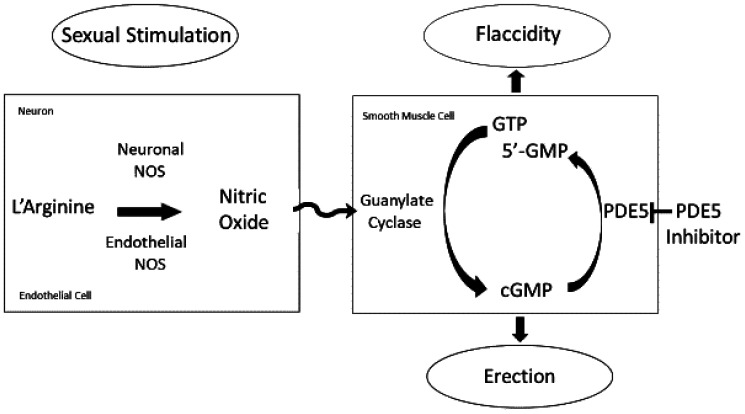Fig. 1.
Schematic diagram of the nitric oxide signaling pathway in the penis for mediating the erection response. The diagram shows the molecular basis for erection physiology that may transition between flaccidity (erectile tissue contraction) and erection (erectile tissue relaxation) depending upon the extent of sexual stimulation. Nitric oxide is generated constitutively from L-arginine by catalysis of neuronal nitric oxide synthase (NOS) and endothelial NOS localized to neurons and endothelial cells, respectively. After its release from generator cells in the penis, nitric oxide diffuses locally to corporal smooth muscle cells whereby it activates guanylate cyclase to convert 5′-guanosine triphosphate (GTP) to 3′, 5′-cyclic guanosine monophosphate (cGMP). This cyclic nucleotide then exerts downstream effects resulting in penile erection. Phosphodiesterase type 5 (PDE5) degrades cGMP to its inactive form, 5′-GMP, which is subsequently reformed into GTP. A PDE5 inhibitor blocks PDE5 activity, thereby potentiating effector actions of cGMP.

